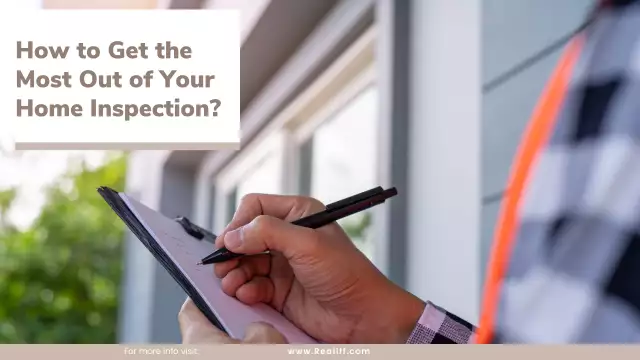How to Build Your Own Outdoor Shower
Building an outdoor shower is a great way to add a touch of luxury and convenience to your backyard. Imagine being able to rinse off after a dip in the pool or a long day of gardening, or simply taking a refreshing shower in the open air on a hot summer day. An outdoor shower can also add value to your home and make it more attractive to potential buyers if you ever decide to sell.
But building an outdoor shower is more than just a practical consideration - it's also an opportunity to express your creativity and personalize your outdoor space. You can choose from a wide range of styles and designs, from rustic and natural to sleek and modern. You can incorporate unique features like a built-in bench, a solar-heated water tank, or a custom mosaic tile design. And best of all, you can enjoy the satisfaction of having built something with your own two hands that enhances your home and your lifestyle.
Of course, building an outdoor shower does require some planning and effort. You'll need to choose a location, design the layout, obtain any necessary permits, and construct the shower frame and plumbing. But with some basic DIY skills and a willingness to learn, anyone can tackle this project and create a beautiful and functional outdoor shower. In the following steps, we'll go through the process of building an outdoor shower in more detail, providing tips and personal anecdotes along the way to help make your project a success.

Choose a location for your outdoor shower.
When selecting a location, think about what kind of experience you want to create. Do you want to feel like you're showering in the middle of the forest, surrounded by trees and wildlife? Or do you prefer a more secluded spot that's shielded from neighbors and passersby?
For my own outdoor shower, I chose a spot near the edge of my property, nestled between some tall bushes and a small garden. It's just far enough from the house to feel like a private oasis, but close enough to run a water line without too much hassle.
Determine the size of your shower.
Consider the number of people who will be using the shower, as well as any additional features you may want to include. For example, do you want a bench or a shelf for holding soap and shampoo?
When designing my own outdoor shower, I opted for a relatively small size that would accommodate one or two people comfortably. I also decided to include a small shelf for holding soap and a towel.
Plan the plumbing layout.
Consult with a licensed plumber to ensure that your plumbing plan is safe and up to code. Depending on your location, you may need to obtain permits before beginning construction.
When planning my own outdoor shower, I worked with a plumber to design a simple layout that would allow me to run a water line from my house to the shower. We dug a trench and buried the line, then connected it to the showerhead and other fixtures.
Build the shower frame.
Use pressure-treated lumber to construct a simple frame for the shower. Make sure to use galvanized screws or other rust-resistant hardware to prevent corrosion over time.
For my own shower, I chose a basic design that consisted of four wooden posts and two cross beams. I used a circular saw to cut the lumber to size and a power drill to secure the pieces together.
Dig a hole for the plumbing.
Using a shovel, dig a hole deep enough to accommodate the plumbing. I recommend digging a hole that's at least two feet deep to ensure stability.
Once the hole is dug, fill it with gravel or concrete to provide a stable base. This will help prevent the pipes from shifting or settling over time.
Install the plumbing.
Connect the PVC pipes and fittings according to your plumbing plan, and use waterproof sealant to prevent leaks. Be sure to follow all safety guidelines when working with plumbing tools and materials.
When installing the plumbing for my own shower, I found it helpful to lay out all the pieces beforehand and dry-fit them together to make sure everything was in the right place. This saved time and prevented mistakes later on.
Attach the showerhead and other fixtures.
Once the plumbing is in place, attach the showerhead and any other fixtures, such as a hose attachment or soap dish. Be sure to tighten all connections securely to prevent leaks.
When choosing a showerhead for my own outdoor shower, I opted for a simple, low-flow model that would conserve water and reduce waste. I also installed a hose attachment for rinsing off sandy feet or dirty gardening tools.
Test the water flow.
Turn on the water to make sure everything is working properly. Adjust the water pressure and temperature as needed, and check for any leaks or other issues.
When I tested the water flow for my own shower, I was thrilled to see a steady stream of cool water cascading down from the showerhead. It was a small but satisfying milestone in the construction process.
Install a shower curtain or enclosure.
If you want a bit of privacy while using your outdoor shower, you may want to install a shower curtain or enclosure. This can be as simple or as elaborate as you like, depending on your preferences and budget.
For my own outdoor shower, I chose a simple shower curtain made of durable, water-resistant fabric. I hung it from a tension rod that I mounted between two of the wooden posts. This gave me just enough privacy without blocking out the natural surroundings.
Add finishing touches.
Once the shower is functional, you can add some personal touches to make it feel like your own. Consider adding plants or landscaping around the shower, or hang up some outdoor-friendly artwork or decorations.
For my own outdoor shower, I added a few potted plants and some hanging lanterns to create a cozy, inviting atmosphere. I also placed a small bench nearby for sitting and relaxing after a long day in the garden.
FAQs
Do I need a permit to build an outdoor shower?
The answer to this question varies depending on where you live. Some municipalities require permits for outdoor showers, while others do not. It's best to check with your local government to determine if you need a permit for your specific project.
Can I use an existing water source for my outdoor shower?
Yes, if you have an existing outdoor spigot or water line, you can tap into that source for your outdoor shower. However, you may need to install a pressure regulator and backflow preventer to ensure that the water pressure and quality are safe for showering.
How do I prevent water from pooling around my outdoor shower?
Proper drainage is key to preventing water from pooling around your outdoor shower. You can install a simple gravel or sand bed beneath the shower floor to help with drainage, or even create a sloped or grated shower floor that directs water away from the shower area.
How can I make my outdoor shower more private?
There are several options for adding privacy to your outdoor shower, such as installing a shower curtain, building an enclosure, or using tall plants to create a natural screen. You can also consider the location of the shower and whether it's visible from neighboring properties.
Can I use my outdoor shower in cold weather?
If you live in an area with freezing temperatures, you may need to winterize your outdoor shower to prevent damage to the plumbing and fixtures. This may involve draining the water lines and removing the showerhead and knobs until warmer weather returns.

In conclusion, building an outdoor shower can be a fun and rewarding project that adds a unique touch to your backyard. With some careful planning and a bit of elbow grease, you can create a beautiful and functional space for washing off after a swim, rinsing off dirty gardening tools, or just enjoying a refreshing shower in the great outdoors.








